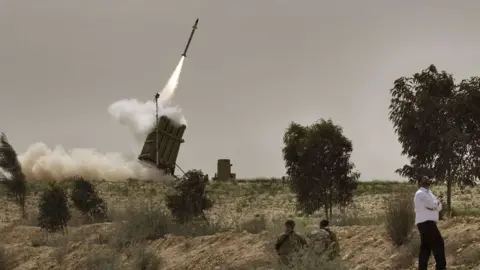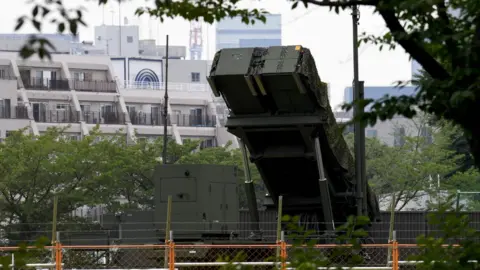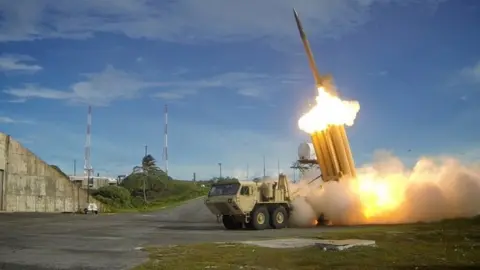North Korean missiles: Can the US defend itself?
 Reuters
ReutersWhatever the precise range and capability of North Korea's latest ballistic missile test, there is no doubt that it is making steady progress towards its goal of having a nuclear-capable missile, able to threaten the continental US.
That term "nuclear capable" is important. Pyongyang must both miniaturise a nuclear warhead to fit on the head of a missile and be able to protect it against all the buffeting and forces as it re-enters the earth's atmosphere.
We do not know precisely where the North Koreans stand in this aspect of their programme. But it is possible that North Korea will achieve its goal during the Trump presidency.
This then throws a spotlight on the US ability to defend against such an attack. Huge quantities of money have been invested in ballistic missile defence. There is a global network of satellite sensors and relays able to spot and track a missile launch. Interceptor missiles are already in place.
But critics believe that the US system is far from reliable. The Trump administration is reviewing the whole programme. New generations of interceptor missiles are coming on stream. But in the foreseeable future, only a handful will be available to deal with the potential North Korean threat.
 AFP/Getty
AFP/GettyWe are a long way from the "Star Wars" dream of President Ronald Reagan, who hoped for the construction of a missile-proof shield over the US and its allies. In those days ballistic missile defences were seen by many as destabilising.
That is why there was a Cold War treaty largely banning them. They would threaten the certainty of a retaliatory nuclear attack getting through, thus increasing the likelihood of a no-warning onslaught, in turn decreasing the effectiveness of nuclear deterrence.
Missile defence viewed as part of the strategic equation between two nuclear-armed superpowers is one thing. Some argued that even a less-than-effective defensive system would alter an opponent's calculations.
But very quickly the idea of a missile-proof screen - like a comic book Captain America's shield protecting the continental US - was seen as science fiction if not fantasy. It would be too expensive and the technology simply did not exist.
 AFP/Getty
AFP/GettyScroll forward a few decades and the threat that missile defence is now ranged against is very different. It is not - despite Russian protests - aimed at weakening Russia's nuclear forces. It is designed to protect against a very specific threat - from Iran or North Korea's developing missile arsenals.
Against this kind of threat, the requirement is not simply to alter an adversary's strategic calculations, but to stop each and every missile getting through.
Technology has advanced dramatically with some of the most significant strides being made by Israel. Its interceptor systems and their associated radars - funded in large part by the US - have shown themselves spectacularly successful, even though against a full-scale onslaught even Israel's system would be sorely tested.
 Reuters
ReutersIn contrast the US's own defensive system, according to many critics, is not yet up to the job. Testing has provided mixed results. And there are frequent criticisms that even the most elaborate tests are not conducted in ways which fully resemble real-world conditions.
Even US commanders accept that their defences are not fully missile-proof and that they might quickly be overwhelmed if a country possessed a sizeable arsenal of missiles.
Whatever President Trump decides to do about North Korea and the growing reach of its missiles, time is running out.
One option he may pursue is to step up the US's own defences, just as he has deployed interceptor missiles in South Korea to try to enhance its defences against missile attack.
